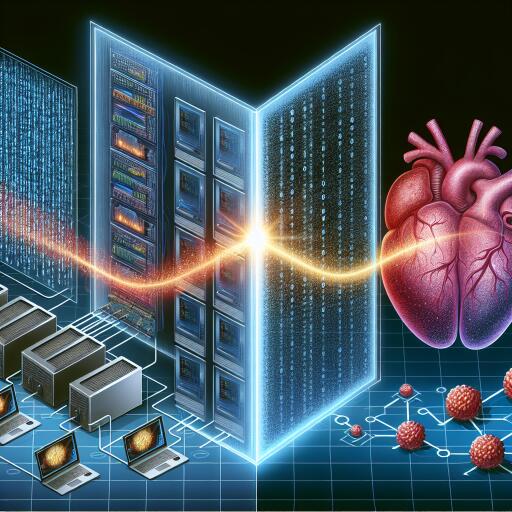Exploring the Vanguard of Biomedical Innovation Through Parallel Data Processing
The fusion of technology and healthcare is an ever-evolving frontier, brimming with breakthrough innovations and complex challenges. The development of computer-aided diagnosis systems and the burgeoning field of artificial intelligence (AI) have dramatically transformed the way we approach healthcare and biomedical research. However, the rapid advancement of technology juxtaposed against the intricate needs of practical healthcare scenarios presents a significant disparity. This gap underscores an urgent need to harness the full potential of AI and big data within the biomedical domain to revolutionize healthcare as we know it.
Bridging the Gap with Advanced Computing
Applications of Parallel Data Processing for Biomedical Imaging seeks to address this divide head-on, offering cutting-edge insights and practical solutions that promise to pave the future of biomedical research and healthcare innovation. This pivotal resource is designed to foster collaboration between the brightest minds in computer science and biomedical research, showcasing the latest advancements in deep learning and big data analytics.
By providing a comprehensive platform for the exchange of knowledge and ideas, the work aims to catalyze significant advancements across a myriad of fields, including data mining, AI, computer vision, healthcare engineering, and beyond. Its interdisciplinary nature makes it an essential touchstone for scholars, educators, and industry professionals alike, appealing to both seasoned experts and newcomers eager to explore the confluence of parallel computing, AI, and their applications in the biomedical sector.
Key Themes and Innovations
The content of this seminal book covers an expansive array of topics, ranging from heterogeneous and biological computing to AI’s role in biomedical imaging and big data processing. It delves into the promising horizons of AI and deep learning in medicine, touching on transformative technologies such as machine learning and deep learning-based decision-making systems, advanced biomedical imaging techniques, and the future of medical education.
Particular emphasis is placed on the exploration of future network architectures that can support parallel processing, signifying a leap towards optimizing and redefining healthcare delivery and biomedical services. This exploration not only illuminates the paths for technological advancement but also lays the groundwork for innovative solutions in bioinformatics, biomechanics, and a broad spectrum of biomedical applications.
Shaping the Future of Healthcare and Biomedical Research
As a beacon for those captivated by the potential synergies between big data, intelligent IoT, and parallel computing, Applications of Parallel Data Processing for Biomedical Imaging stands at the forefront of an interdisciplinary movement aimed at reshaping the landscape of healthcare technology. It inspires a vision of a future where healthcare and biomedical research are more integrated, efficient, and capable of addressing the complex challenges of the 21st century.
Through its in-depth analysis and forward-thinking perspectives, this work not only educates but also inspires action towards the creation of a more connected, intelligent, and patient-centric healthcare ecosystem. As the fields of computer science and biomedical research continue to converge and evolve, the insights and methodologies presented within these pages will undoubtedly play a crucial role in guiding that transformation.
In conclusion, Applications of Parallel Data Processing for Biomedical Imaging exemplifies the tremendous potential of bridging technological innovation with biomedical insights. It represents a key step forward in the ongoing journey to fully unlock the transformative power of AI and parallel data processing in the biomedical domain, charting a course toward a future where such integrations lead to unprecedented advancements in healthcare and beyond.










